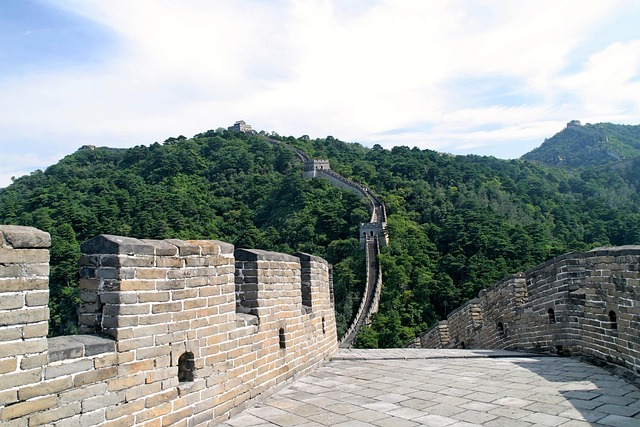The Great Wall of China is one of the most iconic and historic landmarks in the world. Stretching over 13,000 miles across northern China, it stands as a symbol of the country’s rich history, architectural brilliance, and strategic military prowess. Known for its breathtaking beauty, historical significance, and vast scale, the Great Wall is not only one of the Seven Wonders of the Medieval World but also a UNESCO World Heritage Site, attracting millions of visitors each year.
What is the Great Wall of China?
The Great Wall of China is an ancient series of fortifications built primarily to protect Chinese states and empires from invasions by nomadic tribes and military incursions. Its construction spans several centuries, with the earliest walls dating back to the 7th century BC during the Warring States period. However, the most well-known sections of the wall were built during the Ming Dynasty (1368-1644), and it remained an important military defense structure until the 17th century.
History of the Great Wall
The Great Wall wasn’t built all at once; it evolved over time, with many different walls being constructed by various dynasties. The first walls were built by the Qin Dynasty (221-206 BC), under the rule of Emperor Qin Shi Huang, who is also known for the Terracotta Army. However, it was the Ming Dynasty that created the wall in its present form, with robust brick and stone structures, watchtowers, and garrison stations. The wall was designed not only to defend against invaders but also to control migration and trade along the Silk Road.
Over the centuries, the Great Wall has faced weathering, damage, and destruction, but much of it remains intact today, offering visitors a fascinating glimpse into China’s past.
Key Features of the Great Wall of China
The Great Wall is much more than just a wall. Here are some of its most notable features:
- Length and Reach: The Great Wall stretches over 13,000 miles (21,196 kilometers) and runs through 15 northern Chinese provinces, from the Bohai Sea in the east to the Gobi Desert in the west.
- Materials Used: The materials used in constructing the wall varied depending on the terrain and the availability of resources. In some areas, the wall was built using earth and wood, while in others, it was constructed from stone, brick, and brickwork.
- Watchtowers and Fortresses: Along the wall, watchtowers were built at regular intervals to provide strategic views of the surrounding areas. These were used as military outposts, enabling troops to communicate and defend against enemies.
- Construction Methods: The construction of the wall required an enormous workforce, including soldiers, peasants, and prisoners. It is said that more than one million workers were involved in building and maintaining the wall.
- Sections of the Wall: The Great Wall is divided into several sections, with some being more popular for tourists, such as the Badaling, Mutianyu, and Jinshanling sections, which are well-preserved and easily accessible. Other sections, like Jiayuguan, offer a more remote and rugged experience.
Why is the Great Wall of China Important?
The Great Wall holds significant historical, cultural, and military importance. Here’s why it remains so vital to China’s heritage:
- Defense and Protection: The wall served as a defensive barrier, protecting the Chinese empire from frequent invasions by nomadic tribes, particularly the Mongols and the Xiongnu. Its strategic design and location made it difficult for invaders to breach.
- Cultural Symbolism: The Great Wall symbolizes China’s strength, determination, and resilience. Over time, it has become a national symbol and an integral part of the country’s identity.
- Tourism and Economic Impact: Today, the Great Wall attracts millions of tourists annually. It plays a vital role in China’s economy, with tourism bringing significant revenue to the regions surrounding the wall.
- World Heritage Site: The Great Wall was recognized by UNESCO as a World Heritage Site in 1987 for its historical and cultural value. It is considered one of the greatest architectural feats in human history.
Visiting the Great Wall of China
When planning a visit to the Great Wall of China, there are several important things to know:
- Best Time to Visit: The ideal time to visit the Great Wall is during the spring (April to June) and autumn (September to November), when the weather is pleasant and the crowds are fewer. Winter (December to February) can be quite cold, and summer (July and August) can get hot and crowded.
- Most Popular Sections: The most visited sections of the Great Wall are the Badaling, Mutianyu, and Jinshanling sections. These are well-preserved, with easy access and good facilities, including cable cars and restaurants. For those looking for a more adventurous experience, the Simatai and Jiayuguan sections are less crowded and offer stunning views.
- How to Get There: The Great Wall is easily accessible from Beijing, the capital city of China. It is about a 1.5-hour drive to the most popular sections, like Badaling and Mutianyu. Public transportation, such as buses and trains, are also available to reach various parts of the wall.
Fun Facts about the Great Wall
- Myth of Visibility from Space: It is often said that the Great Wall is the only man-made structure visible from space. However, this is a myth, as astronauts report that the wall is very difficult to spot from space with the naked eye.
- Length Variations: The length of the Great Wall varies depending on how it is measured. Some sections were built with overlapping walls and other structures, so estimates vary between 13,000 miles and 21,000 miles.
- Construction Took Centuries: The wall was built over several dynasties, but the most significant work was carried out during the Ming Dynasty, lasting from the 14th to the 17th century.
- Economic Significance: The Great Wall served as an important element in the Silk Road trade by controlling the flow of goods, including silk, spices, and porcelain, between China and the outside world.
Conclusion: The Great Wall of China – A Marvel of Human Ingenuity
The Great Wall of China stands as one of the greatest architectural and engineering achievements in human history. Its vast scale, intricate design, and rich history make it a must-see destination for anyone visiting China. Whether you’re exploring the well-preserved sections near Beijing or venturing into the more remote parts of the wall, a visit to this extraordinary landmark offers a unique opportunity to connect with China’s ancient past.
In conclusion, the Great Wall of China is more than just a wall; it is a monumental symbol of China’s enduring history and resilience. If you’re planning a trip to China, make sure to visit the Great Wall – it’s an experience that will stay with you forever.






